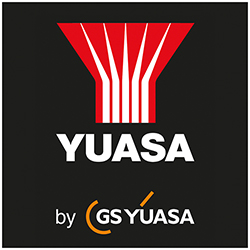Technical Document
Specifications
Brand
YuasaCapacity
100Ah
Nominal Voltage
12V
Construction
AGM
Terminal Type
M8
Flame Resistant
No
Dimensions
350 x 168 x 225mm
Designed for Cyclic Application
Yes
Application
Cyclic
Designed High Rate Application
No
Eurobat Classification
3 to 5 Years
Operating Temperature Range
-20 → +60°C
Weight
38.8kg
Country of Origin
United Kingdom
€ 453.59
€ 453.59 Each (Exc. VAT)
1
€ 453.59
€ 453.59 Each (Exc. VAT)
Stock information temporarily unavailable.
1
Stock information temporarily unavailable.
Technical Document
Specifications
Brand
YuasaCapacity
100Ah
Nominal Voltage
12V
Construction
AGM
Terminal Type
M8
Flame Resistant
No
Dimensions
350 x 168 x 225mm
Designed for Cyclic Application
Yes
Application
Cyclic
Designed High Rate Application
No
Eurobat Classification
3 to 5 Years
Operating Temperature Range
-20 → +60°C
Weight
38.8kg
Country of Origin
United Kingdom

